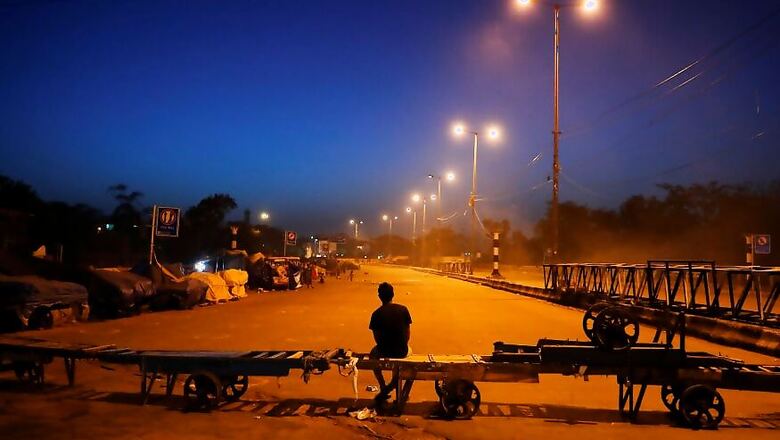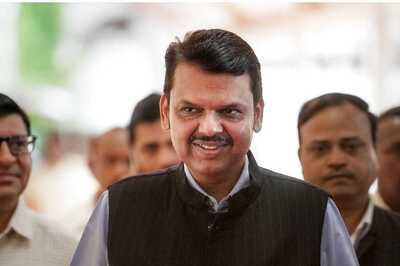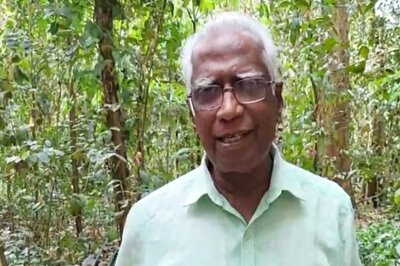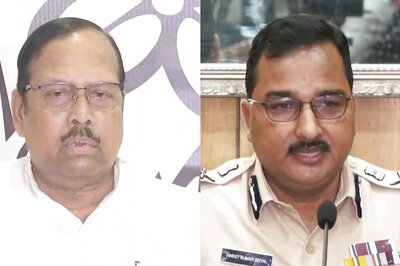
views
COVID-19 has created a unique challenge for the world that is grappling with a complex, unpredictable and dynamic situation. Recently, the global death toll crossed 119,000; India too has been considerably impacted, although not as much as the US, UK or Italy.
Thanks to the bold and timely lockdown decision taken by the prime minister, the spread of the virus in India has been arrested. In fact, a recent Oxford University study, which analysed the response of various governments towards COVID-19, awarded India the highest stringency score of 100.
Nevertheless, the lockdown will undoubtedly have inevitable economic consequences; therefore, it must be lifted in a carefully calibrated manner with an aim to save both lives and livelihoods.
Mandatory Norms
Relatively simple interventions such as the wearing of masks, avoiding crowded areas and providing personal protective equipment (PPE) to frontline workers can reduce ‘Ro’. Ro is the number of people who can be infected by a contagious person. Measures such as increasing testing, contact-tracing and timely quarantine—if taken together—can further reduce Ro. Thus, basic guidelines such as social distancing, wearing of masks, occupation of alternate seats in public transport, closure of high-risk areas such as religious places, weekly bazaars, temperature screening, regular sanitization of premises, etc., must be made mandatory. High-risk groups such as those above the age of 65 years and those with underlying medical conditions should stay at home and maintain distance from working members of the family. These norms should be made universally applicable for a period of time, irrespective of the risk-profile of a location. This cannot be a one-way effort by the government, cooperation of the citizens is a must.
Hyper-localisation Strategy
A hyper-local containment strategy, which entails a bottom-up over a top-down approach could be a key consideration. Ideally, hotspots should be closed off, while the rest of the areas could be opened in a staggered manner. One could think of red zones as hotspots, which would remain shut off, with essential services working. The orange zones could be areas of risk with enhanced precautions and reasonable restrictions in place, while green zones should be opened subject to compliance with mandatory norms that were previously highlighted. The definition of a zone and the criterion adopted for classification could be left to the district authorities, given their understanding of the area under them, while the broad contours can be defined by the state and central governments. For instance, in an urban setting, a zone could be colony or a ward. If a single positive case is detected in a colony, it should be declared a red zone and closed off. As a precautionary measure, those colonies that surround could be declared orange while those unaffected should remain green. Such a strategy ensures targeted containment of hotspots that will save lives and a calibrated opening of safe zones, which will save livelihoods.
Ramping up Testing and Medical Infrastructure
Preparations for developing medical infrastructure in the form of COVID-dedicated beds and ventilators should be undertaken for the worst-case scenario, irrespective of the probability of it occurring. There is also no doubt that testing is a crucial strategy to contain the spread of the virus, which should be ramped up on a war footing. Ideally, we should strive to do antigen, as well as antibody testing, particularly in areas that are hotspots. Symptomatic people should be tested for COVID-19 and should be isolated and treated if found positive. Asymptomatic, as well as symptomatic people, who tested negative for the virus, should be tested for antibodies. If antibodies are detected, they can be issued e-passes, which would allow them unhindered movement while those who test negative should stay indoors and take all necessary precautions.
Leveraging Technology
Technology should form the backbone of all efforts that are undertaken in this direction. The recently launched Aarogya Setu app, which enables users in identifying their risk of contracting the virus as well as self-reporting their health status is a mammoth step. The data aggregated through the app can assist in predictive modelling and understanding more about the behaviour of the virus in India. The app can be made a one-stop solution for all aspects of dealing with the novel coronavirus, including the issuance of e-passes to those who test negative for the virus, or positive for the antibodies.
Crisis Management and Institutional Memory
The management of the situation has shown the best side of cooperative federalism, with Centre and states jointly battling the situation, and enforcement being carried out by the districts. However, there is a need to develop a dynamic system to deal with the situation, along the lines of a project management unit. Such a system should lay down the levels of authority, offer planning, monitoring and risk management tools and allow for the setting of dynamic milestones and protocols. For instance, if a district magistrate red-flags a locality or an issue, it must immediately be visible to the entire chain, including the central government, and a protocol for management should be made available immediately to the DM; his efforts being monitored in real time by all concerned. Building institutional memory is also important—we must have adequate data of the situation and our response, which can be analysed to evaluate our actions, build capacity for the future and develop necessary tools and protocols.
We all have a present bias or a tendency to discount the future in favour of the present. A crisis such as COVID-19 shows that the future can no longer be discounted and we must start planning and ramping up preparedness for more of such situations in the future, which may manifest themselves in the form of climate change-related developments, epidemics or other complex emergencies. At the heart of our response must be simplistic interventions that are focused, intelligent and easy to implement; this is particularly important in the context of a country as vast and diverse as India. The combined efforts of India and it’s 1.3 billion people shall ensure that this situation too, shall pass and we emerge victorious on the other side.
(Siddharth Sinha is Young Professional, Infrastructure, NITI Aayog. Views expressed are personal.)



















Comments
0 comment